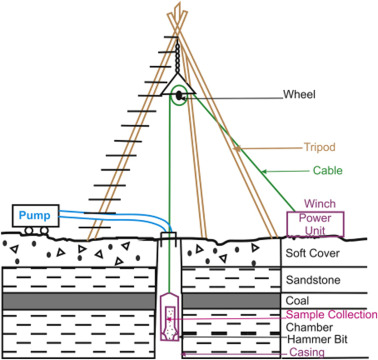Percussion Drilling: The Pros and Cons of this Geological Exploration Method

Percussion drilling is a common technique used in geology to extract core samples from the earth’s crust. This method involves using a drill bit that repeatedly hammers down on the rock surface, creating a hole that can be filled with drilling fluid to extract core samples. Percussion drilling is a versatile technique that can be used for a wide range of geological exploration tasks, from oil and gas exploration to mineral exploration.

How Percussion Drilling Works
Percussion drilling is carried out using a percussion drill, which consists of a drill bit, a drilling fluid system, and a power source. The drill bit is attached to the end of the drill string, which is lowered into the borehole. As the drill bit rotates, it hammers down on the rock surface, creating a hole that is filled with drilling fluid to keep the bit lubricated and cool. The drilling fluid also helps to bring the core samples to the surface.
Advantages of Percussion Drilling
One of the main advantages of percussion drilling is its versatility. It can be used in a variety of geological formations, including hard rock, soft rock, and unconsolidated formations. Percussion drilling is also relatively fast and efficient. Additionally, percussion drilling is a cost-effective method, making it a popular choice for many geological exploration projects.
Disadvantages of Percussion Drilling
Despite its advantages, percussion drilling also has disadvantages. Percussion drilling can cause significant damage to the rock formation being drilled, making it unsuitable for some geological projects.
Conclusion
Overall, percussion drilling is a versatile and cost-effective method of geological exploration that is widely used in the industry. While it has some drawbacks, such as its limited depth capabilities and potential for rock damage, it remains a popular choice for many exploration projects. As with any drilling method, it is important to weigh the pros and cons carefully before deciding whether to use percussion drilling for a specific geological exploration task.
